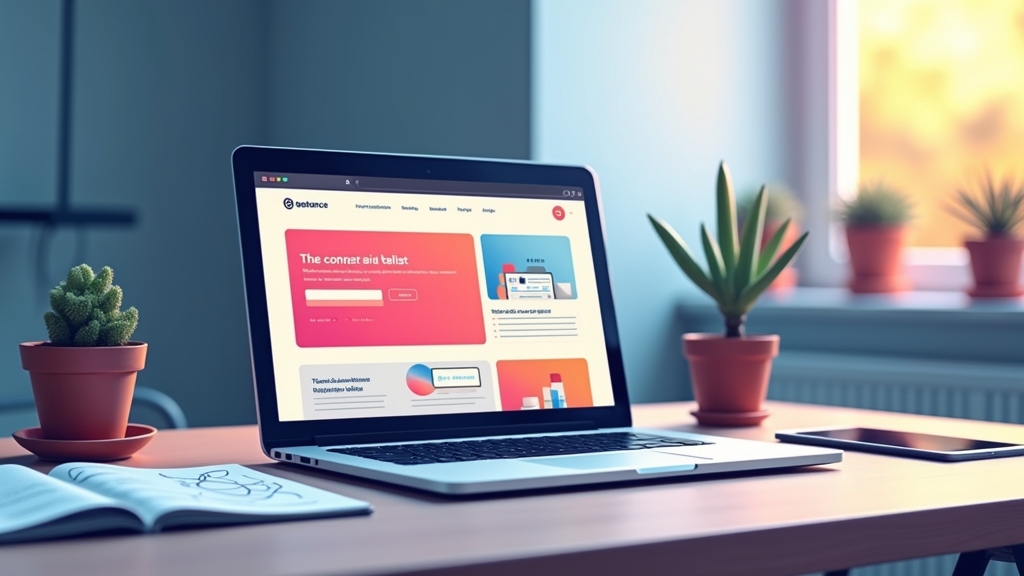advertising
Imagine a platform where your work not only finds a digital home, but becomes a magnet for professional opportunities. Behance, owned by Adobe, is exactly that: a global showcase that connects creatives from all corners of the world to potential employers, clients and collaborators. Unlike an ordinary social network, its focus is purely on the quality and visual impact of your work, allowing your skills to speak louder than any CV. Have you ever stopped to think how many doors can open when your portfolio is seen by the right recruiters at the right time? This isn't just a space to show off, but to demonstrate your ability to solve problems through design, illustration, photography or whatever your creative field of expertise. Let's dive together into strategies for turning your profile into a powerful tool for career growth.
Why is Behance the right choice for your digital portfolio?
In a sea of options for hosting your work, Behance stands out for being a platform made by creatives for creatives. Native integration with Adobe Creative Cloud, for example, is a huge advantage for those who already use applications such as Photoshop and Illustrator on a daily basis, allowing them to publish projects directly from these softeres. And think of the audience: we're talking about a community with millions of active users, including art directors, specialized headhunters and companies that breathe innovation. The organic visibility you gain here is difficult to replicate on a stand-alone personal website. How about imagining your project being liked by a professional you admire or, perhaps, being selected to appear on the platform's homepage? This exposure could be the push you need to get your talent recognized. Visit the official website to get started: Behance.
advertising
The platform's architecture is deliberately designed to tell stories. Each project can be a rich visual narrative, detailing the brief, the creative process, the challenges overcome and the final results. This is infinitely more valuable than simply throwing up a gallery of loose images. Recruiters aren't just looking for a set of pretty pictures; they want to understand how you think, how you deal with obstacles and how your solutions meet a goal. A portfolio on Behance is therefore your opportunity to make a complete presentation without having to be physically present. Do you agree that a well-told case study is more memorable than a simple collection of papers? Take advantage of Adobe's own guide resources for inspiration: Behance Project Gallery.
Finally, the discovery aspect is an asset that cannot be underestimated. The platform has robust algorithms that recommend projects to users based on their interests and past activities. This means that by publishing work in line with market trends and with a good description, you exponentially increase the chances of being discovered by someone who is genuinely interested in your niche. Companies such as IDEOfor example, often explore Behance in search of new talent. Your next big opportunity could be just a click awaywaiting for you to decide to show the world what you're capable of.
Building a profile that impresses at first glance
Your Behance profile is your digital business card, the first impression a recruiter will have of you. And we all know that a first impression is crucial, don't we? Start by investing in a professional and friendly profile photo that conveys confidence and identity. Then take the time to craft a captivating bio - this is no time to be modest! Describe who you are, what you believe in as a creative, your areas of expertise and, most importantly, what you can do for a potential client or employer. Use keywords related to your expertise, such as "Interface Design", "Motion Graphics" or "Art Direction", to make it easier for you to be found in searches. Think of it like the cover of your book: it needs to attract the reader to want to turn the pages.
The organization of your projects also speaks volumes about your professionalism. A messy profile, with outdated work or work of varying quality, can give the impression of sloppiness. Instead, curation is the watchword. Select your best works, those that really represent the level of quality you want to offer and the type of job you're aiming for. Group similar projects into coherent covers and use clear, objective titles. For example, instead of "Project 01", opt for "Banking App Redesign - Design System". This not only makes navigation easier, but also demonstrates clarity of thought and purpose. Have you ever visited the profile of a professional you admire to understand how they structured their page?
Don't forget to fill in all the available sections, such as professional experience and education. This information gives credibility and context to your trajectory, connecting the dots between your education, your past experiences and the work you display. Link your Behance profile to your LinkedIn and other relevant professional networks, creating a cohesive network of your personal brand online. A complete and well-maintained profile signals to the market that you take your career seriously. After all, why would a recruiter hire someone who isn't dedicated to presenting their work in the best possible light?
The art of presenting a project: far beyond the final images
Publishing a project on Behance goes far beyond uploading a few images. This is where the magic happens, where you turn a piece of work into an engaging case study. Always start with an impactful title and an irresistible cover image - this will be the bait for people to click through and want to see more. Next, the project introduction is your hook. Describe the context, the client, the proposed challenge and, above all, your role in the solution. Good storytelling turns passive viewers into engaged readerswho will follow every stage of your creative process with genuine interest.

Detail the process as if you were guiding the recruiter behind the scenes. Include initial sketches, moodboards, color palettes, typographic studies and discarded versions. This demonstrates depth, shows that there is a method behind your creativity and proves your ability to develop structured work. Showing "how" you got there is just as important as showing the end result. How about imagining an art director looking at your project and thinking: "This person really understands the process, not just the software"? To learn more about presentation techniques, explore Adobe's blog: Adobe's Behance blog.
End the project with the final results highlighted, but also with a reflection on what was learned. What feedback was received? What success metrics were achieved? If possible, include client testimonials or links to the work on air. This holistic approach not only validates the effectiveness of your work, but also closes the narrative cycle in a satisfactory way. Remember: a project well presented on Behance is a self-sufficient piece of personal marketing, capable of answering most of the questions a recruiter would have during an interview.
Strategies to maximize your visibility and attract recruiters
Having an amazing portfolio is only half the battle; the other half is making sure the right people see it. Behance offers powerful tools for this, but it's up to you to use them wisely. One of the most effective is the strategic use of tags. When publishing a project, don't skip this step! Use specific tags (e.g. "UI Design", "packaging", "visual identity") and more generic tags (e.g. "design", "branding") to cover a wider spectrum of searches. Think of tags as the lighthouses that guide ships lost in the digital ocean towards your portfolio.
Interaction with the community is another fundamental pillar for increasing your reach. You're not in a silent art gallery, but at a busy fair. Comment constructively on other creatives' projects, like work that you genuinely admire and follow professionals and studios that are a reference for you. This interaction often leads to these profiles reciprocating the gesture, leading to your profile being seen by their followers. The network you build today could be the bridge to tomorrow's opportunity. Have you ever considered that the fellow designer you exchanged ideas with today could be the person who nominates you for an amazing job in the future?
Take an active part in Behance's "Briefs", which are creative challenges sponsored by major brands. These briefs are a fantastic opportunity to have your work seen by major companies and to add a relevant and current project to your portfolio. Also, share your projects on other social networks, such as LinkedIn and Instagram, always with a direct link to Behance. Turn each publication into an invitation to learn more about your work. Companies like Google Design often observe these communities in search of talent. Persistence and consistency in these actions are what separate a forgotten profile from one that is always on the radar.
From like to interview: converting views into concrete opportunities
Now that your portfolio is impeccable and receiving views, how can you turn this interest into real job offers? First, make it easy to get in touch. Your contact information should be clearly visible in your bio - a professional email address is essential. Many designers make the mistake of thinking that the recruiter will bother to hunt down how to get in touch. Don't let bureaucracy stand between you and your dream job. Include a direct call-to-action, such as "Available for new projects and opportunities" or "Let's talk?".
When someone views your profile, Behance offers detailed statistics. Monitor them! Pay attention to which projects have the most views and likes, and which countries and companies the hits come from. This data is a treasure trove of insights. If you notice that a specific project has caught the eye of a studio you're interested in, that's the cue for proactive action. You can send a polite e-mail to the recruiter, mentioning that you've noticed the interest and would like to connect. This personalized approach shows initiative and genuine interest, qualities that are highly valued.
Finally, treat every interaction as the start of a professional relationship. Respond to all comments and messages in a polite and timely manner, even if it's not a job invitation at the time. The person who praised your work today could be the one who refers you for a job tomorrow. Always keep your portfolio up to date, even when you're employed, because you never know when an even better opportunity might arise. Your Behance is a living organism that should grow and evolve along with your career. The journey to attract jobs in design is continuous, and each new project is a new chapter in your professional story that you are telling to the world.



